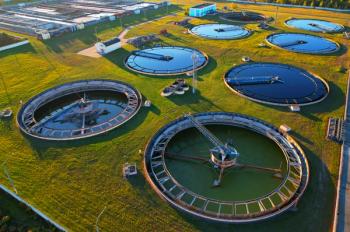
The LCGC Blog: Theoretical Computations to Aid Vacuum Ultraviolet Spectroscopic Gas Chromatography Detection
Theoretical computations can contribute input into experimental determinations.
When I was a Ph.D. student, my dissertation was focused on studying adduct ion formation during electrospray ionization. It became useful to try to understand the structures of various proton- and sodium-bound dimers, so I pursued some theoretical computations. These were basic geometry optimizations to generate the lowest energy structure(s), but they did provide some interesting insight into how some substitutions on the adducted ions modulated the stability of the complexes. Since that point, I have always appreciated the potential for theoretical computations to contribute insight into experimental determinations.
There really are not a ton of routine analytical chemistry techniques that can be well aided by hard-core theoretical computations. Mass spectrometry stands out as the most prominent. Gas phase ions, and their fragments can be well modeled by computational means; for example, when more than one fragment ion structure could be possible, computations can help decide the most probable, by judging the relative energy of the candidate structures. There are some other good opportunities with techniques like blackbody infrared radiative dissociation (BIRD) in mass spectrometry (1). It is possible to calculate the gas phase infrared absorption spectra for ions, in order to help surmise what temperature might most effectively excite the ion and cause efficient dissociation.
As we began to study vacuum ultraviolet spectroscopic detection for gas chromatography (GC-VUV) (2), it became apparent that the prediction of absorption spectra could be quite useful in a number of cases. The first obvious case is where chemical standards do not exist; in order to confirm a suspected identity of a chemical in the absence of an available chemical standard to analyze, one can calculate the molecule’s expected absorption spectra and compare it with that observed experimentally. Computed spectra can also be useful when mixed standards are obtained (for example, a mix of cis- and trans-isomers), and it is desired to assign the identity of each; they could certainly be partially separated in a GC analysis.
In many cases, we have explored the potential to use theoretical computations to aid our experimental GC-VUV work. Designer street drugs is an interesting area. Synthetic opioids and the like include classes of isomeric species, many of which can look identical to a mass spectrometric detector, even after fragmentation. We showed an exceptional ability to differentiate these species using GC-VUV (3). Both measured and computed spectra were quite unique for individual molecules belonging to larger sets of isomers. In a case like this, it is interesting to contemplate that one might be able to start looking for new designer street drugs, even before they are first observed, and their structure elucidated. One could pre-load a library with computed spectra for suspected future drug structures and have an instrument already ready to identify the new drug, once it shows up. A similar strategy could be imagined for predicting spectra of and detecting new chemical warfare agents.
Another study which benefitted greatly from the ability to compute absorption spectra, was a synthetic one on copper-mediated functionalization of polyaromatic hydrocarbons (PAHs) (4). Various PAHs were oxidized to create several products, but again no standards of these suspected products were available for purchase. By computing the spectra for expected reaction products, they could be assigned when they were observed; this information is quite useful then for tuning the reaction to be more selective for targeting certain desirable products.
Most recently, we have focused our attention on investigating some fundamental aspects of petrochemical absorption in the VUV spectral range. One of the most impactful applications of GC-VUV is in the petrochemical space, especially for the characterization of refined fuels (5–7). Saturated hydrocarbons absorb strongly in the low wavelength range between 125 – 165 nm. Absorption by alkanes results in a broad, fairly featureless band in this wavelength range. It has been largely postulated that HOMO-LUMO energy gaps could be used primarily to explain alkane absorption (8); however, our recent computational study (9), supplemented by the availability of a large number of experimental measurements, suggested that the first strong excitations of alkanes are not always associated with the HOMO-LUMO gap. This variation also depends on whether the alkane is linear, cyclic, or branched, and how many carbon atoms are present.
In another computationally-focused study, we investigated different time-dependent density functional theory (TD-DFT) functionals and basis sets to determine what combination provided the best prediction power for a series of paraffin, iso-paraffin, naphthene, olefin, and aromatic species (10). It was clear that diffuse functionals are necessary to effectively predict experimental spectra.
As we explore more the use of theoretical computations to support GC-VUV-based experimental work, it is important to point out that previous experimental measurements of VUV spectra were primarily made at synchrotron facilities. Thus, there has been much less experimental spectra available to help refine computational methods, compared to what is now available through the use of the benchtop GC-VUV instrument. Additionally, computed spectra are lines that need to be artificially broadened to better resemble experimental spectra. The experimental spectra exhibit vibronic coupling, which is not accounted in basic theoretical spectral prediction. It is also not clear whether computational methods might be able to accurately predict absorptivities of molecules in the gas phase – to aid in quantitative analyses. In short, there exists a great deal of room for further refinement and use of computational methods to aid GC-VUV work.
References
(1) W.D. Price, P.D. Schnier, and E.R. Williams Anal. Chem.68, 859–866 (1996).
(2) K.A. Schug, I. Sawicki, D.D. Carlton Jr., H. Fan, H.M. McNair, J.P. Nimmo, P. Kroll, J. Smuts, P. Walsh, and D. Harrison Anal. Chem.86, 8329–8335 (2014).
(3) L. Skultety, P. Frycak, C. Qiu, J. Smuts, L. Shear-Laude, K. Lemr, J.X. Mao, P. Kroll, K.A. Schug, A. Szewczak, C. Vaught, I. Lurie, and V. Havlicek, Anal. Chim. Acta1497, 135–143 (2017).
(4) T.T. Pondura, C. Qiu, J.X. Mao, A. Leghissa, J. Smuts, and K.A. Schug, New J. Chem.42, 19442–19449 (2018).
(5) J. Schenk, X. Mao, J. Smuts, P. Walsh, P. Kroll, and K.A. Schug, Anal. Chim. Acta945, 1–8 (2016).
(6) P. Walsh, M. Garbalena, and K.A. Schug, Anal. Chem.88, 11130–11138 (2016).
(7) M.N. Dunkle, P. Pijcke, B. Winniford, and G. Bellos J. Chromatogr. A 1587, 239–246 (2019).
(8) E.A. Costner, B.K. Long, C. Navar, S. Jockusch, X. Lei, P. Zimmerman, A. Campion, N.J. Turro, and C.G. Willson, J. Phys. Chem. A113, 9337–9347 (2009).
(9) J.X. Mao, P. Kroll, and K.A. Schug, Structural Chem. (2019). https://doi.org/10.1007/s11224-019-01412-y.
(10) J.X. Mao, P. Walsh, P. Kroll, and K.A. Schug, Appl. Spec. (2019). https://doi.org/10.1177/0003702819875132.
Kevin A. Schug is a Full Professor and Shimadzu Distinguished Professor of Analytical Chemistry in the Department of Chemistry & Biochemistry at The University of Texas (UT) at Arlington. He joined the faculty at UT Arlington in 2005 after completing a Ph.D. in Chemistry at Virginia Tech under the direction of Prof. Harold M. McNair and a post-doctoral fellowship at the University of Vienna under Prof. Wolfgang Lindner. Research in the Schug group spans fundamental and applied areas of separation science and mass spectrometry. Schug was named the LCGC Emerging Leader in Chromatography in 2009 and the 2012 American Chemical Society Division of Analytical Chemistry Young Investigator in Separation Science. He is a fellow of both the U.T. Arlington and U.T. System-Wide Academies of Distinguished Teachers.
Newsletter
Join the global community of analytical scientists who trust LCGC for insights on the latest techniques, trends, and expert solutions in chromatography.





